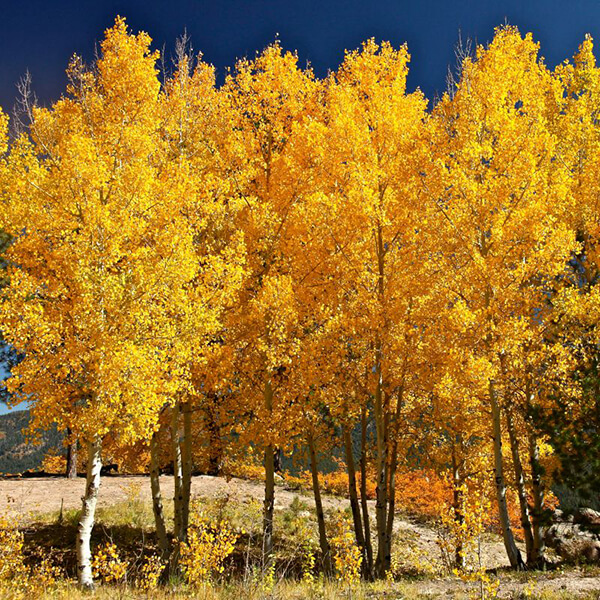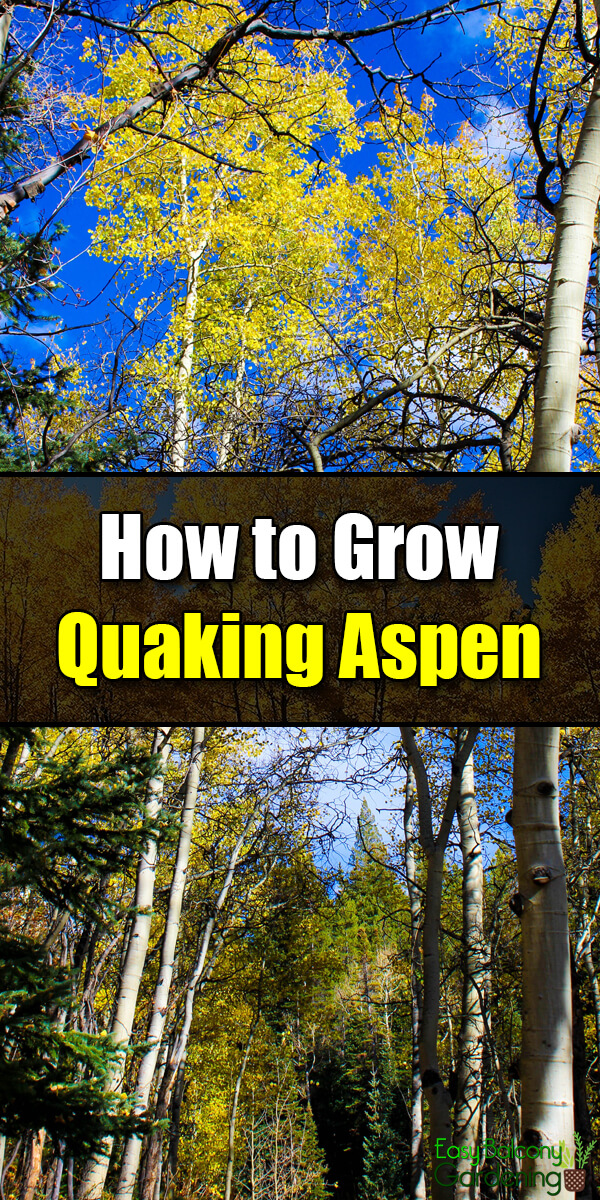The Quaking Aspen is a perennial tree that grows vigorously in the spring and summer. It blooms in mid-spring, and can grow as tall as 40 feet during a twenty-year period. Its maximum height is up to 65 feet. Its flattened leaf stems enable the leaves to twist, bend and flutter even with a slight breeze making it seem to quake, hence the term Quaking Aspen. It is quite cold hardy, but will not tolerate temperatures below -38°F. It also has low tolerance to drought and limited irrigation.
Propagation
Although the Quaking Aspen can reproduce itself from the offshoots of its roots underground, it can be propagated by root cuttings and by seeds.
Cuttings
Before collecting your cuttings, prepare a 50/50 peat/perlite mixture. It should be sufficient to place approximately four inches of mixture in the bottom of the container, plus another two inches to cover the cuttings placed therein. After the last threat of frost, collect the cuttings with a clean, sharp knife. The cuttings should have a diameter of approximately half an inch to one inch and about 12 inches in length. Take out the leaves from the lower half of the cuttings. Wrap them in damp, clean newspaper to protect the roots from drying out. Treat the cuttings with some rooting hormone then place in the container. Cover with the reserved two inches of mixture. Keep the container where the humidity is high and the temperature does not go higher than 75ºF. Keep the cuttings moist. After several weeks, when rooting must have happened, take the plants where they can acclimatize. Absent a cold frame setting, find the north side of a structure where there is more shade. Plant the Quaking Aspens after growth has stopped.
Seeds
Using cold stratification, place the seeds in a clean Ziplock bag lined with slightly but uniformly moistened vermiculate. To ensure proper moisture, thoroughly dampen the vermiculate and squeeze the water out. Store the bag in the bottom compartment of the refrigerator. Some seeds may germinate during the process. Fresh seeds, under normal condition, have up to 95% success but they stay viable for about two to four weeks only. Seeds allowed to dry for three days can be stored in a cool location for up to a year.
Planting the Quaking Aspen
Just plant it in full sun, add some fertilizer, and keep it well-watered. For unsatisfactory soil, add compost and other organic materials. For containers, mix a 50/50 native soil and peat/compost combination. Allow about ten feet of space between trees, if you do not want a tight clump of trees. Do not stake the Quaking Aspen unless you see it starting to lean dramatically. Caterpillar outbreaks can cause serious defoliation. Kill eggs and larvae in the spring, when it is still cold. Poplar borer beetles are a common enemy. Avoid overgrazing of young suckers. Big game animals can also disturb Quaking Aspen roots and compact the soil.
Importance of Quaking Aspen
Aside from having medicinal and culinary capabilities, the Quaking Aspen is quite usable for making products like plywood, flooring, paneling, toys, beehives, playground equipment, etc. For landscaping, do not plant the Quaking Aspen close to structures due to their aggressive roots. The Quaking Aspen is also used for protection against soil erosion and fires. Its wood is soft and has low flammability. The parts of the Quaking Aspen are wildlife foods. The Native Americans have used the Quaking Aspen bark by drying and grinding it and mixing it with other starches for making bread.








